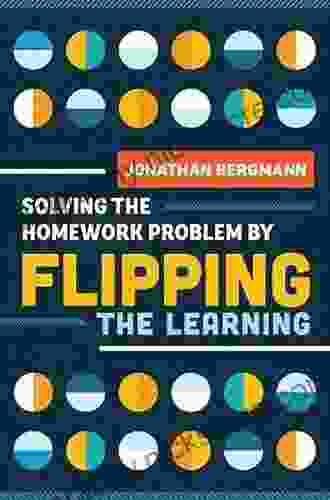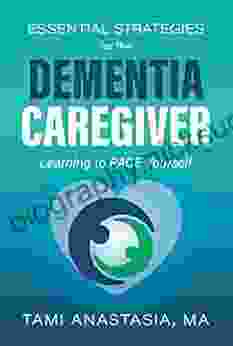Learning to Pace Yourself: A Comprehensive Guide for Optimal Performance

In today's fast-paced world, it's easy to get caught up in the relentless pursuit of productivity and achievement. However, without proper pacing, even the most ambitious individuals can face burnout, decreased effectiveness, and compromised well-being. Learning to pace yourself is an essential skill for anyone seeking sustainable success and a fulfilling life.
5 out of 5
| Language | : | English |
| File size | : | 3363 KB |
| Text-to-Speech | : | Enabled |
| Screen Reader | : | Supported |
| Enhanced typesetting | : | Enabled |
| Print length | : | 269 pages |
| Lending | : | Enabled |
Understanding Pacing
Pacing refers to the deliberate and balanced distribution of effort over time. It involves setting realistic goals, establishing clear boundaries, and respecting your limits. By pacing yourself, you create a sustainable approach to your endeavors, allowing you to maintain high levels of performance without compromising your physical, mental, or emotional health.
The Benefits of Pacing Yourself
- Reduced risk of burnout: Pacing yourself prevents excessive stress and exhaustion, which can lead to burnout.
- Enhanced productivity: Consistent effort over time leads to better results than intense bursts of activity followed by periods of inactivity.
- Improved focus and concentration: Pacing yourself allows you to maintain focus and avoid cognitive fatigue.
- Preserved physical and mental health: Overexertion can damage your body and mind. Pacing yourself protects your well-being.
- Greater overall performance: A balanced approach allows you to sustain your performance over the long term, rather than peaking and fading.
Common Pitfalls in Pacing
- Pushing too hard for too long: Ignoring your limits and trying to maintain an unsustainable pace can lead to burnout.
- Lack of planning: Failing to establish clear goals and boundaries can make it difficult to pace yourself effectively.
- Fear of missing out (FOMO): Feeling pressured to keep up with others can lead to overwork and diminished self-esteem.
- Perfectionism: Setting unrealistic standards can result in procrastination and avoidance.
- External pressure: Feeling obligated to meet unrealistic expectations from others can compromise your pacing.
Effective Techniques for Pacing Yourself
- Set realistic goals: Break down large tasks into smaller, manageable chunks to avoid feeling overwhelmed.
- Establish clear boundaries: Set limits on your work hours, social commitments, and personal time to prevent overextension.
- Prioritize tasks: Focus on the most important activities first and delegate or eliminate less critical ones.
- Take regular breaks: Step away from your work periodically to refresh your mind and regain focus.
- Learn to say no: Practice politely declining additional commitments that would compromise your pacing.
- Practice self-care: Engage in activities that nourish your physical, mental, and emotional well-being.
- Monitor your progress: Track your progress and adjust your pacing as needed to ensure sustainability.
Examples of Pacing in Different Areas of Life
- Work: Plan your workload, set deadlines, and take regular breaks to avoid burnout and maintain productivity.
- Education: Break down study materials into manageable sections, schedule study sessions, and incorporate regular breaks.
- Exercise: Gradually increase the intensity and duration of your workouts to avoid injury and improve fitness.
- Personal life: Set boundaries for social commitments, schedule time for relaxation and hobbies, and make time for loved ones.
- Financial management: Track your expenses, create a budget, and save regularly to achieve financial stability.
Learning to pace yourself is a valuable life skill that can enhance your performance, preserve your well-being, and contribute to your overall success. By adopting a balanced approach, you can avoid burnout, maintain focus, and achieve your goals without sacrificing your physical, mental, or emotional health. Remember, pacing yourself is not about slowing down, but rather about finding a sustainable and effective rhythm that will allow you to thrive in all aspects of your life.
Additional Tips for Pacing Yourself:
- Use a planner or calendar to visualize your schedule and track your progress.
- Set aside specific times for work, breaks, and personal activities.
- Delegate or outsource tasks that you can't handle yourself.
- Learn to recognize the signs of stress and take steps to manage it.
- Be flexible and adjust your pacing as needed to accommodate unexpected events or changing circumstances.
Pacing yourself is an ongoing process that requires self-awareness, discipline, and a commitment to personal growth. By embracing the principles of balanced effort, you can unlock your full potential and achieve long-lasting success and fulfillment.
5 out of 5
| Language | : | English |
| File size | : | 3363 KB |
| Text-to-Speech | : | Enabled |
| Screen Reader | : | Supported |
| Enhanced typesetting | : | Enabled |
| Print length | : | 269 pages |
| Lending | : | Enabled |
Do you want to contribute by writing guest posts on this blog?
Please contact us and send us a resume of previous articles that you have written.
 Fiction
Fiction Non Fiction
Non Fiction Romance
Romance Mystery
Mystery Thriller
Thriller SciFi
SciFi Fantasy
Fantasy Horror
Horror Biography
Biography Selfhelp
Selfhelp Business
Business History
History Classics
Classics Poetry
Poetry Childrens
Childrens Young Adult
Young Adult Educational
Educational Cooking
Cooking Travel
Travel Lifestyle
Lifestyle Spirituality
Spirituality Health
Health Fitness
Fitness Technology
Technology Science
Science Arts
Arts Crafts
Crafts DIY
DIY Gardening
Gardening Petcare
Petcare Beth Miller
Beth Miller Steven Bell
Steven Bell Linda Welters
Linda Welters Sam Harris
Sam Harris Jonathan Kellerman
Jonathan Kellerman Violet Moller
Violet Moller Barbara Ann Kipfer
Barbara Ann Kipfer Ellen Lewin
Ellen Lewin Maha Alkurdi
Maha Alkurdi Mykel Hawke
Mykel Hawke Jude Currivan
Jude Currivan Lock Gareth
Lock Gareth Jenny Chandler
Jenny Chandler William Wasserman
William Wasserman Robin Nixon
Robin Nixon Eric Leiser
Eric Leiser Barbara Taylor
Barbara Taylor Hill Gates
Hill Gates William H Frey
William H Frey David Thomas
David Thomas John Garrity
John Garrity Erica B Marcus
Erica B Marcus Ping Li
Ping Li Mackenzi Lee
Mackenzi Lee Ryan A Pedigo
Ryan A Pedigo Geoffrey Finch
Geoffrey Finch Ron Lemaster
Ron Lemaster David Starbuck Smith
David Starbuck Smith Clayton King
Clayton King Joanne Glenn
Joanne Glenn Blair Braverman
Blair Braverman Carlo Collodi
Carlo Collodi Ryan T White
Ryan T White Khurshed Batliwala
Khurshed Batliwala Sara Shepard
Sara Shepard Jessica Smartt
Jessica Smartt Casey Watson
Casey Watson Print Replica Kindle Edition
Print Replica Kindle Edition Dave Rearwin
Dave Rearwin Shmuel Peerless
Shmuel Peerless Vanessa Garbin
Vanessa Garbin Elizabeth George Speare
Elizabeth George Speare Cara Koscinski
Cara Koscinski Tim Ingold
Tim Ingold Christopher Taylor Ma Lmft
Christopher Taylor Ma Lmft Bernard Marr
Bernard Marr Jay Abramson
Jay Abramson Janna Levin
Janna Levin Ray Comfort
Ray Comfort P J Agness
P J Agness Barry Johnston
Barry Johnston Suzanne Wylde
Suzanne Wylde Sam Cowen
Sam Cowen Cait Stevenson
Cait Stevenson Charlotte Browne
Charlotte Browne Pavla Kesslerova
Pavla Kesslerova Elliott Vandruff
Elliott Vandruff Visual Arts
Visual Arts John Lister Kaye
John Lister Kaye John Quick
John Quick Jack Andraka
Jack Andraka Bagele Chilisa
Bagele Chilisa Edwin R Sherman
Edwin R Sherman John J Robinson
John J Robinson Barbara Rogoff
Barbara Rogoff Yang Kuang
Yang Kuang Rachel Morgan
Rachel Morgan Christine Kenneally
Christine Kenneally Robin Mcmillan
Robin Mcmillan Margaret Owen
Margaret Owen Chris Cage
Chris Cage James Duthie
James Duthie Mike Loades
Mike Loades John G Robertson
John G Robertson Robert A Baruch Bush
Robert A Baruch Bush Richard Harris
Richard Harris Chiara Sparks
Chiara Sparks Harvey Wittenberg
Harvey Wittenberg Leia Stone
Leia Stone Susan Scott
Susan Scott Richard Scott
Richard Scott Kit Yates
Kit Yates Leah Cullis
Leah Cullis Robert Ardrey
Robert Ardrey Brian Switek
Brian Switek Mike High
Mike High Nick Townsend
Nick Townsend Nick Neely
Nick Neely Gordon Witteveen
Gordon Witteveen Vanessa Ogden Moss
Vanessa Ogden Moss Daniel M Koretz
Daniel M Koretz Cheryl Erwin
Cheryl Erwin Dr Craig Malkin
Dr Craig Malkin Fred Mitchell
Fred Mitchell Mia Scotland
Mia Scotland James Syhabout
James Syhabout Holger Schutkowski
Holger Schutkowski Bridget Flynn Walker Phd
Bridget Flynn Walker Phd Erica Schultz
Erica Schultz John Whitman
John Whitman Barbara Illowsk
Barbara Illowsk Meghan L Marsac
Meghan L Marsac Dacher Keltner
Dacher Keltner Jean Illsley Clarke
Jean Illsley Clarke Melissa Haag
Melissa Haag Oliver T Spedding
Oliver T Spedding Craig Lambert
Craig Lambert Kam Knight
Kam Knight Jayanti Tambe
Jayanti Tambe Allan V Horwitz
Allan V Horwitz Jenna Helland
Jenna Helland Laura Pavlov
Laura Pavlov Ralph Galeano
Ralph Galeano Scott Westerfeld
Scott Westerfeld Emily Chappell
Emily Chappell David Taylor
David Taylor Michelle Rigler
Michelle Rigler Tim Marshall
Tim Marshall James Kilgo
James Kilgo Graham R Gibbs
Graham R Gibbs Steven Hawthorne
Steven Hawthorne Spencer Wells
Spencer Wells Mike Allison
Mike Allison Jeff Belanger
Jeff Belanger Julie L Spencer
Julie L Spencer Mark Kurlansky
Mark Kurlansky Susan Nance
Susan Nance Nadine Hays Pisani
Nadine Hays Pisani David Cockburn
David Cockburn Ben Collins
Ben Collins Stephen J Bavolek
Stephen J Bavolek Scott Malthouse
Scott Malthouse John Kimantas
John Kimantas Simon Spurrier
Simon Spurrier Stephanie Fritz
Stephanie Fritz Ellen Notbohm
Ellen Notbohm Paul Van Lierop
Paul Van Lierop Catherine M Cameron
Catherine M Cameron John C Norcross
John C Norcross Nina Manning
Nina Manning Stan Tekiela
Stan Tekiela Diane Yancey
Diane Yancey Nichole Carpenter
Nichole Carpenter Barry Rhodes
Barry Rhodes Eric Engle
Eric Engle Melissa Gomes
Melissa Gomes Mark Twain
Mark Twain Nancy E Willard
Nancy E Willard Dustin Hansen
Dustin Hansen Barzin Pakandam
Barzin Pakandam Jeffrey Jensen Arnett
Jeffrey Jensen Arnett Michael Wood
Michael Wood Daniel S Lobel Phd
Daniel S Lobel Phd Daniel P Huerta
Daniel P Huerta Fabien Clavel
Fabien Clavel Constanze Niedermaier
Constanze Niedermaier Bob Holtzman
Bob Holtzman Chuck Missler
Chuck Missler Chadd Vanzanten
Chadd Vanzanten Reelav Patel
Reelav Patel Marshall Jon Fisher
Marshall Jon Fisher Leonard M Adkins
Leonard M Adkins Jane Butel
Jane Butel Yuval Noah Harari
Yuval Noah Harari Colleen Alexander Roberts
Colleen Alexander Roberts Alexandra Andrews
Alexandra Andrews Mary A Fristad
Mary A Fristad Farzana Nayani
Farzana Nayani Gordon H Chang
Gordon H Chang Mike Swedenberg
Mike Swedenberg Denton Salle
Denton Salle Diane Musho Hamilton
Diane Musho Hamilton Glenna Mageau
Glenna Mageau Elizabeth Lockwood
Elizabeth Lockwood Susan Dennard
Susan Dennard Julian I Graubart
Julian I Graubart Isabel Fonseca
Isabel Fonseca Richard H Immerman
Richard H Immerman Gary Soto
Gary Soto Lily Collins
Lily Collins St Louis Post Dispatch
St Louis Post Dispatch Timothy Pakron
Timothy Pakron Frederick Douglass Opie
Frederick Douglass Opie Kenneth Wilgus Phd
Kenneth Wilgus Phd Mark Mayfield
Mark Mayfield Beau Miles
Beau Miles Brad Burns
Brad Burns Bryan Peterson
Bryan Peterson Janis Keyser
Janis Keyser Kyle Butler
Kyle Butler Roy Porter
Roy Porter Edward Lee
Edward Lee Chase Hill
Chase Hill Rachel Dash
Rachel Dash Dustin Salomon
Dustin Salomon Anthony Edwards
Anthony Edwards Grey Owl
Grey Owl Babu The Panda
Babu The Panda Joseph Alton M D
Joseph Alton M D Suzanne Leonhard
Suzanne Leonhard Mark Young
Mark Young Noah Brown
Noah Brown Jane Hardwicke Collings
Jane Hardwicke Collings Toby A H Wilkinson
Toby A H Wilkinson Ernie Morton
Ernie Morton Rowan Jacobsen
Rowan Jacobsen Bb
Bb Joshua Hammer
Joshua Hammer Sampson Davis
Sampson Davis Rob Hutchings
Rob Hutchings Nicholas Wolterstorff
Nicholas Wolterstorff T H White
T H White Shayla Black
Shayla Black Benita Bensch
Benita Bensch Richard Chun
Richard Chun Rebecca Rupp
Rebecca Rupp Helen Kara
Helen Kara Chris Mooney
Chris Mooney Hunbatz Men
Hunbatz Men Steve Burrows
Steve Burrows Baruch Englard
Baruch Englard Jim Fay
Jim Fay Catherine Shainberg
Catherine Shainberg Daniel T Willingham
Daniel T Willingham J Bruce Brackenridge
J Bruce Brackenridge Max Marchi
Max Marchi Ben Povlow
Ben Povlow W Scott Elliot
W Scott Elliot Dan Golding
Dan Golding Ben Goldacre
Ben Goldacre Jean Smith
Jean Smith Nick Bollettieri
Nick Bollettieri Valerie Pollmann R
Valerie Pollmann R Dave Karczynski
Dave Karczynski Stefan Ecks
Stefan Ecks Bruce Pascoe
Bruce Pascoe Basudeb Bhatta
Basudeb Bhatta Nicholas Sparks
Nicholas Sparks Edith Grossman
Edith Grossman Geert Hofstede
Geert Hofstede Cynthia Levinson
Cynthia Levinson David Aretha
David Aretha Vincent Bossley
Vincent Bossley Mark H Newman
Mark H Newman Rick Joyner
Rick Joyner Breanna Hayse
Breanna Hayse Robin Knox Johnston
Robin Knox Johnston Steven Rinella
Steven Rinella Conor Nolan
Conor Nolan Steve Biddulph
Steve Biddulph Bill Mckibben
Bill Mckibben Bashir Hosseini Jafari
Bashir Hosseini Jafari David A Bogart
David A Bogart Mark Rashid
Mark Rashid Barbara Mertz
Barbara Mertz Jessica F Shumway
Jessica F Shumway Jonathan Bergmann
Jonathan Bergmann Charles River Editors
Charles River Editors Beebe Bahrami
Beebe Bahrami Scarlett Thomas
Scarlett Thomas Sam Kean
Sam Kean Rob Rains
Rob Rains Erik J Brown
Erik J Brown Catherine J Allen
Catherine J Allen Charles Soule
Charles Soule Jeff Alt
Jeff Alt Marie Rutkoski
Marie Rutkoski Peter Martin
Peter Martin Justin Sirois
Justin Sirois Jill Brown
Jill Brown Dr Faith G Harper
Dr Faith G Harper Brandon Royal
Brandon Royal Larry Dane Brimner
Larry Dane Brimner Paul Doiron
Paul Doiron Massimo Cossu Nicola Pirina
Massimo Cossu Nicola Pirina Master Gamer
Master Gamer David Abram
David Abram Guy P Harrison
Guy P Harrison Candice Davie
Candice Davie Jeremy Sweet
Jeremy Sweet Gabriyell Sarom
Gabriyell Sarom Richard J Dewhurst
Richard J Dewhurst Kenton Kroker
Kenton Kroker Scott Reed
Scott Reed Charlotte Booth
Charlotte Booth Jennifer Pharr Davis
Jennifer Pharr Davis Thomas Lumley
Thomas Lumley Peter Wacht
Peter Wacht Mike Commito
Mike Commito Tami Anastasia
Tami Anastasia Joanna Hunt
Joanna Hunt Mitch Prinstein
Mitch Prinstein Malcolm Hebron
Malcolm Hebron Smart Reads
Smart Reads J C Cervantes
J C Cervantes Thomas Bulfinch
Thomas Bulfinch Beau Bradbury
Beau Bradbury Boy Scouts Of America
Boy Scouts Of America Charlie Shamp
Charlie Shamp Linnea Dunne
Linnea Dunne Siddhartha Rao
Siddhartha Rao Philip Maffetone
Philip Maffetone Barry Glassner
Barry Glassner Gay Robins
Gay Robins Percy Boomer
Percy Boomer Basu Shanker
Basu Shanker S E Hinton
S E Hinton Joshua G Shifrin
Joshua G Shifrin Dan R Lynch
Dan R Lynch John Henry Phillips
John Henry Phillips Jen Houcek
Jen Houcek James C Radcliffe
James C Radcliffe Jesse Liberty
Jesse Liberty Jaymin Eve
Jaymin Eve Ian Leslie
Ian Leslie Kara Tippetts
Kara Tippetts Ascencia
Ascencia Achille Rubini
Achille Rubini Titus M Kennedy
Titus M Kennedy Bill Milliken
Bill Milliken Mark Ellyatt
Mark Ellyatt Richard Weissbourd
Richard Weissbourd Craig Martin
Craig Martin Emma Walker
Emma Walker Rebecca Solnit
Rebecca Solnit Barry J Kemp
Barry J Kemp Karen Bush
Karen Bush Joseph Schmuller
Joseph Schmuller Daniel J Barrett
Daniel J Barrett David Beaupre
David Beaupre F William Lawvere
F William Lawvere David Klausmeyer
David Klausmeyer Trish Kuffner
Trish Kuffner Donald R Gallo
Donald R Gallo Patrick Sweeney
Patrick Sweeney Stephen K Sanderson
Stephen K Sanderson Hollis Lance Liebman
Hollis Lance Liebman Martin Dugard
Martin Dugard Lynn Mann
Lynn Mann Buddy Levy
Buddy Levy Dr Michael P Masters
Dr Michael P Masters Charles Buist
Charles Buist Yuki Mano
Yuki Mano Bonnie Tsui
Bonnie Tsui Monta Z Briant
Monta Z Briant Reprint Edition Kindle Edition
Reprint Edition Kindle Edition Barbara Russell
Barbara Russell Wayne B Chandler
Wayne B Chandler Marco Grandis
Marco Grandis Ken Xiao
Ken Xiao C R Hallpike
C R Hallpike Burt L Standish
Burt L Standish T C Edge
T C Edge Rachel Smith
Rachel Smith Martin Sternstein
Martin Sternstein John D Barrow
John D Barrow Kathleen Masters
Kathleen Masters Proper Education Group
Proper Education Group Sergei Urban
Sergei Urban Stanislas Dehaene
Stanislas Dehaene Joseph Epes Brown
Joseph Epes Brown Becca Anderson
Becca Anderson Peter K Tyson
Peter K Tyson Muhammad Zulqarnain
Muhammad Zulqarnain Mike Massie
Mike Massie Bobbie Faulkner
Bobbie Faulkner Jenn Mcallister
Jenn Mcallister Danny Staple
Danny Staple Nicole Martin
Nicole Martin Temple West
Temple West Diane Cardwell
Diane Cardwell Roanne Van Voorst
Roanne Van Voorst John Sandford
John Sandford Richard Meadows
Richard Meadows Barbara Kennard
Barbara Kennard Farley Mowat
Farley Mowat Prince Asare
Prince Asare Julie Buxbaum
Julie Buxbaum W Hamilton Gibson
W Hamilton Gibson Alastair Hannay
Alastair Hannay James Duggan
James Duggan J Michael Veron
J Michael Veron Betty Stone
Betty Stone Thomas French
Thomas French George Macdonald
George Macdonald Crystal Duffy
Crystal Duffy Eugene V Resnick
Eugene V Resnick Eliza Reid
Eliza Reid John Aldridge
John Aldridge Rhonda Belle
Rhonda Belle Jennifer Estep
Jennifer Estep Jade Barrett
Jade Barrett Kate Williams
Kate Williams Laura Ingalls Wilder
Laura Ingalls Wilder Randy Baker
Randy Baker Gerald Beaudry
Gerald Beaudry Linda Carroll
Linda Carroll Molly E Lee
Molly E Lee Barbara Neiman
Barbara Neiman Editors Of Southern Living Magazine
Editors Of Southern Living Magazine Jim Wharton
Jim Wharton R L Medina
R L Medina Eddie Merrins
Eddie Merrins Debbie M Schell
Debbie M Schell Brian Gilbert
Brian Gilbert William Byers
William Byers Lawrence Baldassaro
Lawrence Baldassaro Kindle Edition
Kindle Edition Michael Palin
Michael Palin Arnold G Nelson
Arnold G Nelson Ronald Wheeler
Ronald Wheeler Tom Miller
Tom Miller Clifford Herriot
Clifford Herriot Ryan Higa
Ryan Higa Wanda Priday
Wanda Priday Barbara Gastel
Barbara Gastel David Jamieson Bolder
David Jamieson Bolder Jennifer Traig
Jennifer Traig Robert Hogan
Robert Hogan James M Collins
James M Collins Ben Sedley
Ben Sedley Monica Hesse
Monica Hesse Arny Alberts
Arny Alberts Luke Gilkerson
Luke Gilkerson John H Mcwhorter
John H Mcwhorter Sean Mcindoe
Sean Mcindoe Sam Nadler
Sam Nadler Jake Anderson
Jake Anderson Cary J Griffith
Cary J Griffith Lynn Rosen
Lynn Rosen Lew Freedman
Lew Freedman Gary Lincoff
Gary Lincoff Howard Zinn
Howard Zinn Tara Brach
Tara Brach Craig Romano
Craig Romano Jamie Margolin
Jamie Margolin Autumn Carpenter
Autumn Carpenter Pearson Education
Pearson Education Leslie Stager
Leslie Stager Hongyu Guo
Hongyu Guo Emma Brockes
Emma Brockes Shannon Reilly
Shannon Reilly Deanna Roy
Deanna Roy James Koeper
James Koeper Barry Friedman
Barry Friedman Rob Pope
Rob Pope Jutta Schickore
Jutta Schickore Donald Frias
Donald Frias Mike Stanton
Mike Stanton Sharon Dukett
Sharon Dukett Macauley Lord
Macauley Lord Samantha Fitts
Samantha Fitts Christopher L Heuertz
Christopher L Heuertz David Burch
David Burch Kara Goucher
Kara Goucher Matt Taddy
Matt Taddy Rachelle Zukerman
Rachelle Zukerman James Randi
James Randi Graham Farmelo
Graham Farmelo Eric Franklin
Eric Franklin Chris Bennett
Chris Bennett Scott Mactavish
Scott Mactavish Barbara Bassot
Barbara Bassot Cindy Post Senning
Cindy Post Senning Victor Seow
Victor Seow Marc Loy
Marc Loy Otto Scharmer
Otto Scharmer Barry Burd
Barry Burd Barry Rabkin
Barry Rabkin Debra Kilby
Debra Kilby Tori Day
Tori Day Ron Avery
Ron Avery Helen Fisher
Helen Fisher Kate Darling
Kate Darling Chris Eberhart
Chris Eberhart Mick Conefrey
Mick Conefrey Mina Lebitz
Mina Lebitz Pat Shipman
Pat Shipman Jack Newman
Jack Newman Leon Mccarron
Leon Mccarron S K Gupta
S K Gupta Sport Hour
Sport Hour Lewis Thomas
Lewis Thomas V B Alekseev
V B Alekseev
Light bulbAdvertise smarter! Our strategic ad space ensures maximum exposure. Reserve your spot today!

 William ShakespeareJust Like the Lotus: A Journey of Resilience, Healing, and Transcendence
William ShakespeareJust Like the Lotus: A Journey of Resilience, Healing, and Transcendence
 Harry CookBoundary Breakers: Freedom Fighters, Sheroes, and Female Firsts - The Perfect...
Harry CookBoundary Breakers: Freedom Fighters, Sheroes, and Female Firsts - The Perfect... Chuck MitchellFollow ·2.2k
Chuck MitchellFollow ·2.2k Melvin BlairFollow ·13.4k
Melvin BlairFollow ·13.4k Will WardFollow ·5.6k
Will WardFollow ·5.6k Jackson HayesFollow ·18.5k
Jackson HayesFollow ·18.5k Robert ReedFollow ·6.4k
Robert ReedFollow ·6.4k Aubrey BlairFollow ·5.2k
Aubrey BlairFollow ·5.2k John Dos PassosFollow ·4k
John Dos PassosFollow ·4k Ralph EllisonFollow ·8.3k
Ralph EllisonFollow ·8.3k

 Israel Bell
Israel BellEmbark on an Epic 160-Mile Expedition for Charity on the...
Prepare yourself for an...

 Josh Carter
Josh CarterThe Way of the Wild Goose: A Journey of Embodied Wisdom...
The Way of the Wild Goose is an ancient...

 Allen Parker
Allen ParkerMastering the Art of Bean Fly Casting: A Comprehensive...
Fly fishing,...

 Aaron Brooks
Aaron BrooksSolving the Homework Problem by Flipping the Learning
What is flipped...

 Fletcher Mitchell
Fletcher MitchellThe Jane Butel Library: A Renewed Source of Knowledge and...
The Jane Butel...
5 out of 5
| Language | : | English |
| File size | : | 3363 KB |
| Text-to-Speech | : | Enabled |
| Screen Reader | : | Supported |
| Enhanced typesetting | : | Enabled |
| Print length | : | 269 pages |
| Lending | : | Enabled |









